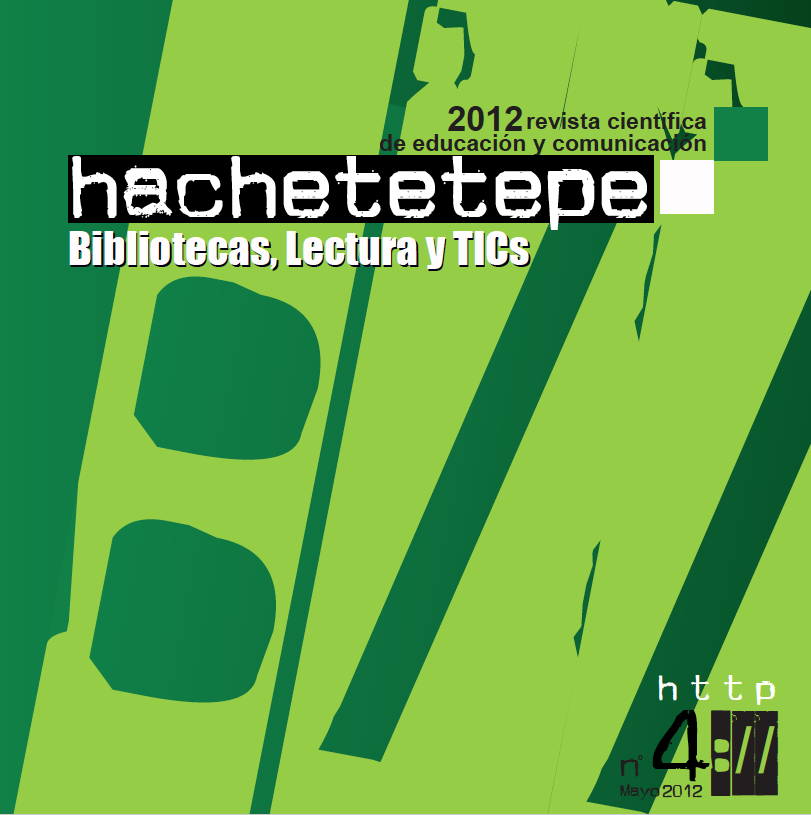Libraries as a Means of Social Learning for People with Visual Disabilities
Abstract
The aim of this work is to conceptualize the experience of information service for people with visual disabilities. This was developed through the Library Services, University of Zulia (SERBILUZ) in Venezuela. The emergent dynamics of social networks on Internet and the appropriation of the WEB 2.0 require library staff with transliteration technology skills. This work analyses the responsibility of information professionals to provide services that foment critical thinking. For this reason, it is necessary that libraries assume the commitment to create social webs that allow the development of higher processes of critical learning where the participants with visual disabilities can appropriate these new technologies for social ends.
Keywords
Downloads
How to Cite
License

This work is licensed under a Creative Commons Attribution-NonCommercial-NoDerivatives 4.0 International License.
Those authors who have published with this journal, accept the following terms:
- They will retain their copyright and guarantee the journal the right to first publication of their work, which will simultaneously be subject to the Creative Commons Attribution License . They may be copied, used, disseminated, transmitted and publicly displayed, provided that the authorship, url, and magazine are cited, and are not used for commercial purposes. No derivative works are allowed.
- They may adopt other non-exclusive license agreements for the distribution of the published version of the work (e.g., deposit it in an institutional telematic archive or publish it in a monographic volume) provided that the initial publication in this journal is indicated.
- Disseminate your work through the Internet (e.g., in institutional telematic archives or on your website) once the manuscript is accepted, which may lead to interesting exchanges and increased citations of the published work. (See The effect of open access).
Hachetetepé. Scientific journal of education and communication does not charge a fee for the submission of manuscripts or for the publication of its articles.
References
Andrade, J. Al.; Mandrillo, C. y Campo Redondo, M. S. (1999). La internet y el hipertexto en la creación colaborativa de conocimiento, en Encuentro educacional, 6, 3; 261-271.
Andretta, S. (2009). Transliteracy: take a walk on the wild side. Proceedings of the World library and information congress, en 75th IFLA General conference and Assemly Libraries create futures: Building on cultural heritage; 23-27 Agosto 2009, Milan, Italia. http://www.ifla.org/files/hq/papers/ifla75/94-andretta-en.pdf (Consultada el 28 de noviembre de 2011)
Area, M. (2008). Las redes sociales en Internet como espacios para la formación del profesorado, en Razón y Palabra, 63. http://www.razonypalabra.org.mx/n63/marea.html (Consultada el 08 de febrero de 2011)
Cordes, S. (2009). The Role of Multimodal Literacy in 21st Century Library Instruction. Proceedings of the World library and information congress, en 75th IFLA General conference and Assemly Libraries create futures: Building on cultural heritage, 23-27 Agosto 2007, Milan, Italia. http://www.ifla.org/files/hq/papers/ifla75/94-cordes-en.pdf (Consultada el 28 noviembre de 2011)
Lippincott, J. (2007). Student content creators: convergence of literacies, en Educause Review, 42(6); 16-17. http://net.educause.edu/ir/library/pdf/ERM07610.pdf (Consultada el 22 noviembre de 2011)
New London Group (1996). A Pedagogy of Multiliteracies: Designing Social Futures, en Harvard Educational Review, (66), 1.
Reynard, R. (2008). Social Networking: Learning Theory in Action.
http://campustechnology.com/articles/2008/05/social-networking-learning-theory-in-action.aspx. (Consultada 09 de febrero de 2011)






